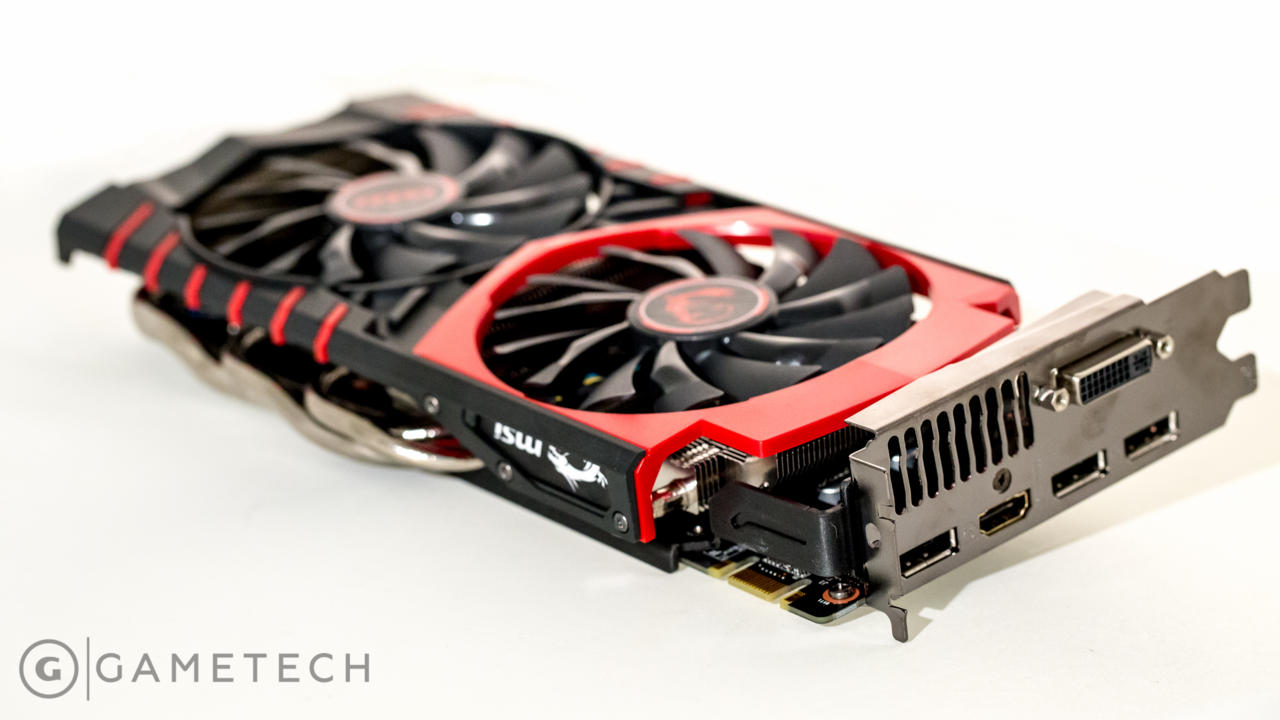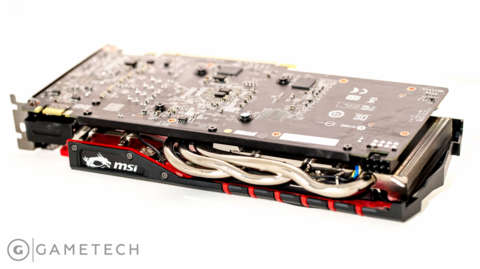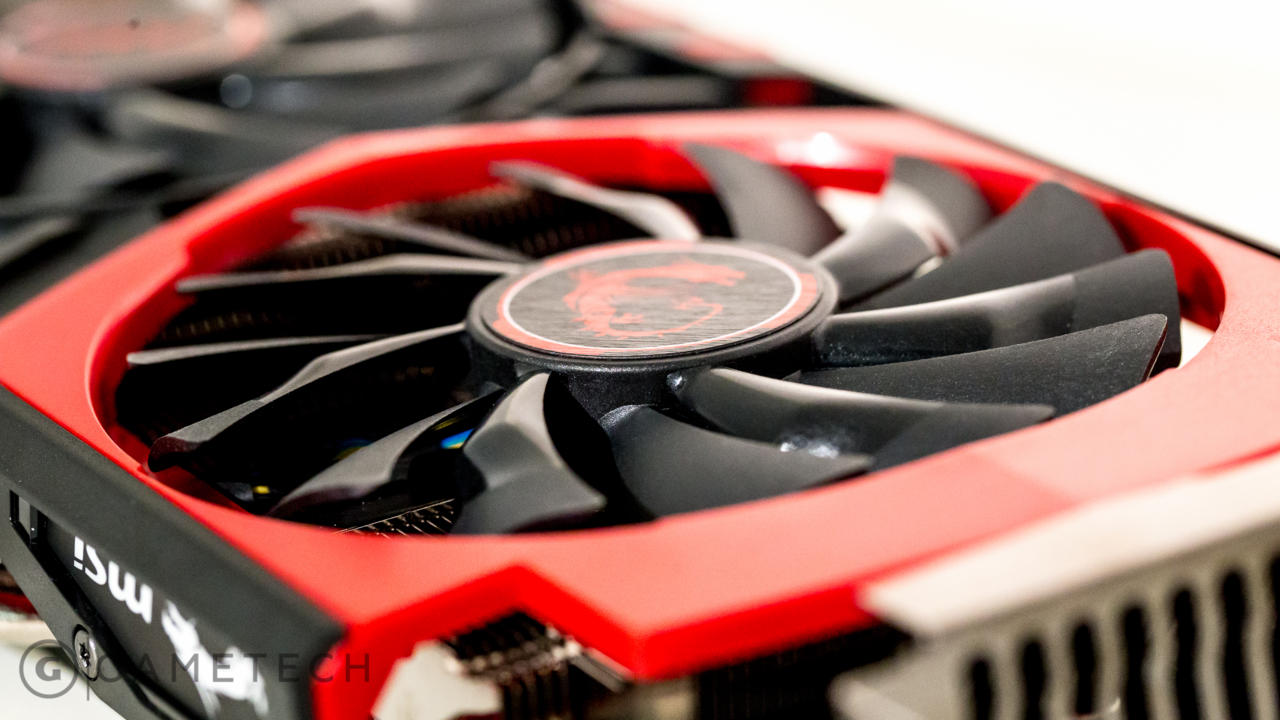So far, Nvidia's impressively power-efficient Maxwell architecture has been quite the potent performer. The GTX 980 is still the fastest single-GPU money can buy, while the cheaper GTX 970 remains fantastic value for money, even if Nvidia's recent PR failings have given its reputation something of a knock. But for the vast majority of people, such pixel pushing power is unnecessary, not to mention expensive. Until recently, the only option for a cheaper Maxwell-based GPU was the $150 GTX 750 Ti. But, with the introduction of the GTX 960, Nvidia's finally making an entry into the hotly contested mid-range market where 1080p is king, and only a sub $200 price will do.
Specs
Naturally, the GTX 960 sacrifices features in order to hit a $199 price tag, effectively the specs of the GTX 980. While the 960 is based on the same power-sipping Maxwell architecture as its bigger brothers, it uses the smaller GM206 chip. This features eight SMM CUDA core clusters for a total of 1024 processors and 32 ROPs, while the memory interface is bumped down from 256-bit to 128-bit. These changes are par for the course with mid-range cards, but the supplied 2GB of memory is stingy by today's standards, particularly as VRAM requirements have been steadily increasing thanks to the 8GB-touting PlayStation 4 and Xbox One.
The smaller 128-bit memory interface equates to 112.2GB/s of peak memory bandwidth. This is actually less bandwidth than the last-generation GTX 760, which featured a 256-bit interface for 192.2GB/s performance. Nvidia claims its third-generation colour compression engine and use of super-fast 7gbps GDDR5 memory will offset the difference, and judging by the performance of the 970 and 980 (which use similar compression technology), that's likely to be the case for 1080p and lower resolutions. It's also worth noting that the 960 has fewer CUDA cores and texture units compared to the 760, this time offset by the card's higher clock speed.

| GPU | GTX 760 (Kepler) | GTX 960 (Maxwell) | GTX 970 (Maxwell) | GTX 980 (Maxwell) |
|---|---|---|---|---|
| CUDA Cores | 1152 | 1024 | 1664 | 2048 |
| Base Clock | 980 MHz | 1126 MHz | 1050 MHz | 1126 MHz |
| GPU Boost Clock | 1033 MHz | 1178MHz | 1178 MHz | 1216 MHz |
| VRAM | 2GB | 2GB | 4GB | 4GB |
| Memory Clock | 6000 MHz | 7000MHz | 7046 MHz | 7000 MHz |
| Memory Bandwidth | 192 GB/sec | 112 GB/sec | 224 GB/sec | 224 GB/sec |
| Memory Bus Width | 256-bit | 128-bit | 256-bit | 256-bit |
| ROPs | 32 | 32 | 56 | 64 |
| TDP | 170W | 120W | 145W | 165W |
| Manufacturing Process | 28-nm | 28-nm | 28-nm | 28-nm |
For those building smaller systems, the real draw is the GTX 960's excellent power efficiency. With a TDP of just 120W, it's entirely possible to build a full Core i7 system, overclock it, and still have a computer that pulls under a meagre 250W under load. That's seriously impressive power efficiency. It's 50W lower than the older 760, and 70W lower than the competing Radeon R9 285. With less power comes less heat, resulting in a GPU that runs very cool, and thus quietly.
Features
MSI's implementation of the 960 makes use of its Twin Frozr cooling system, complete with some serious-looking heatpipes and hefty Torx fans. Note that unlike a blower design, MSI's 960 vents hot air into the case, so good airflow is a must: those working in particularly small and cramped chassis will want a blower-style card, not to mention something a little smaller thanks to the MSI's 26.5cm length. The benefit to all that cooling goodness--provided you have good airflow--is a card that doesn't even have to spin up its fans at idle, or under light loads. And even when stressed, it's extremely quiet. That's another power-efficiency victory for Maxwell, and a win for MSI's cooler.
Connectivity wise, there's just a single 8-pin power connector to hook up (up from the reference design's 6-pin connector), along with one dual-link DVI output, one HDMI, and three full-size display ports. All GTX 960s support DirectX 12, along with Nvidia's full suite of Gameworks technologies like VR Direct, Voxel Global Illumination (VXGI), Multi-Frame Sampled Anti-Aliasing (MFAA) and Dynamic Super Resolution (DSR). One unique feature of the 960 is its new video engine that supports (HEVC) video decoding, unlike the 970 and 980 which only support encoding. This makes the 960 a great choice for home theatre PCs, 4K video can be decoded at low power. Naturally, there's support for HDCP 2.2 content over HDMI 2.0 too.
Performance
So, the GTX 960's got the features, but how does it perform? For testing purposes I ran the MSI 960 at the default clock speed (which MSI calls Silent Mode), so you get an idea of how a stock core performs. Adventurous types can take advantage of MSI's built-in overclocking tools, which give the card a hefty boost. In Gaming Mode, the MSI 960 runs with a 1190MHz core and 1253MHz boost clock, while in OC Mode, it runs with a 1241MHz core and 1304MHz boost clock.

Hooked up to our Core i7-3770K system with 16GB of 1866Mhz DDR3 RAM, the 960 breezed through almost all the 1080p benchmarks, running the test suite of games at above 60fps with all the settings cranked. Naturally, the only game not to do so was perennial system-breaker Crysis 3, which managed a playable, but not entirely smooth 40fps average.
As for higher resolutions, the GTX 960 isn't the best choice, but there are playable frame rates around 30fps to be had at 1440p. If your entire gaming life revolves around stuff like DOTA, League Of Legends, or Counterstrike, then naturally, 1440p at well above 60fps is no problem.
Unigine Heaven
| GPU | Ultra @1080p, 8XAA FPS | Ultra @1440p, 8XAA, Extreme Tessellation |
|---|---|---|
| R9 290X | 55 | 34 |
| GTX 980 | 61 | 37 |
| GTX 970 | 53 | 31 |
| GTX 780 Ti | 55 | 35 |
| GTX 780 | 49 | 31 |
| GTX 960 | 41 | 19 |
Tomb Raider
| GPU | Ultra @1080p, TressFX, FXAA FPS | Ultra @1440p, TressFX, FXAA FPS |
|---|---|---|
| R9 290X | 74 | 52 |
| GTX 980 | 77 | 53 |
| GTX 970 | 73 | 49 |
| GTX 780 Ti | 74 | 49 |
| GTX 780 | 60 | 42 |
| GTX 960 | 58 | 36 |
Metro: Last Light
| GPU | Ultra @1080p, Tessellation Normal, 2XSSAA, Advanced PhysX Off FPS | Ultra @1440p, Tessellation Normal, 2XSSAA, Advanced PhysX Off FPS |
|---|---|---|
| R9 290X | 72 | 44 |
| GTX 980 | 74 | 47 |
| GTX 970 | 72 | 43 |
| GTX 780 Ti | 77 | 47 |
| GTX 780 | 64 | 38 |
| GTX 960 | 60 | 37 |
Battlefield 4
| GPU | Ultra @1080p, 2XMSAA, HBAO FPS | Ultra @1440p, 2XMSAA, HBAO FPS | |
|---|---|---|---|
| R9 290X | 77 | 54 | |
| GTX 980 | 93 | 64 | |
| GTX 970 | 83 | 58 | |
| GTX 780 Ti | 82 | 60 | |
| GTX 780 | 78 | 51 | |
| GTX 960 | 64 | 39 |
Crysis 3
| GPU | Very High @1080p, 2XMSAA FPS | Very High @1440p, 2XMSAA FPS |
|---|---|---|
| R9 290X | 46 | 29 |
| GTX 980 | 52 | 37 |
| GTX 970 | 52 | 32 |
| GTX 780 Ti | 54 | 33 |
| GTX 780 | 48 | 30 |
| GTX 960 | 40 | 25 |
Bioshock Infinite
| GPU | Ultra @1080p, AO, AA FPS | Ultra @1440p, AO, AA FPS |
|---|---|---|
| R9 290X | 120 | 86 |
| GTX 980 | 140 | 90 |
| GTX 970 | 134 | 92 |
| GTX 780 Ti | 134 | 92 |
| GTX 780 | 110 | 73 |
| GTX 960 | 100 | 63 |
Verdict
Performance is good then, but not earth shattering in the same way as the GTX 970 was. It is a tad faster than the outgoing GTX 760, while using far less power, but it's not an essential upgrade for 760 owners, especially because you don't get any extra VRAM and take a hit on memory bandwidth. But, if you're running an older 660 or 560, it's a worthwhile upgrade.

AMD's offerings at around the same price point are very competitive, though. That's especially true of the R9 280, which retails for the same $200, but actually features a 384-bit memory interface and 3GB of memory. Yes, it's based on older architecture, but it stands toe-to-toe with the GTX 960 on performance, and the extra memory is great for those games with large textures, or if you're into modding games like Skyrim.
So the GTX 960 might not be the revolution in value that the GTX 970 was, and the 2GB of memory is stingy by today's standards. But there's still no touching Nvidia when it comes to power efficiency, resulting in a much cooler and quieter card than anything you can get from the competition. If you're after a capable 1080p GPU, it's a good choice for the cash. But, with GPU memory requirements on the rise, I'm keen to see if the tradionally value-orientated AMD can come up with some stiff competition for it later this year.
